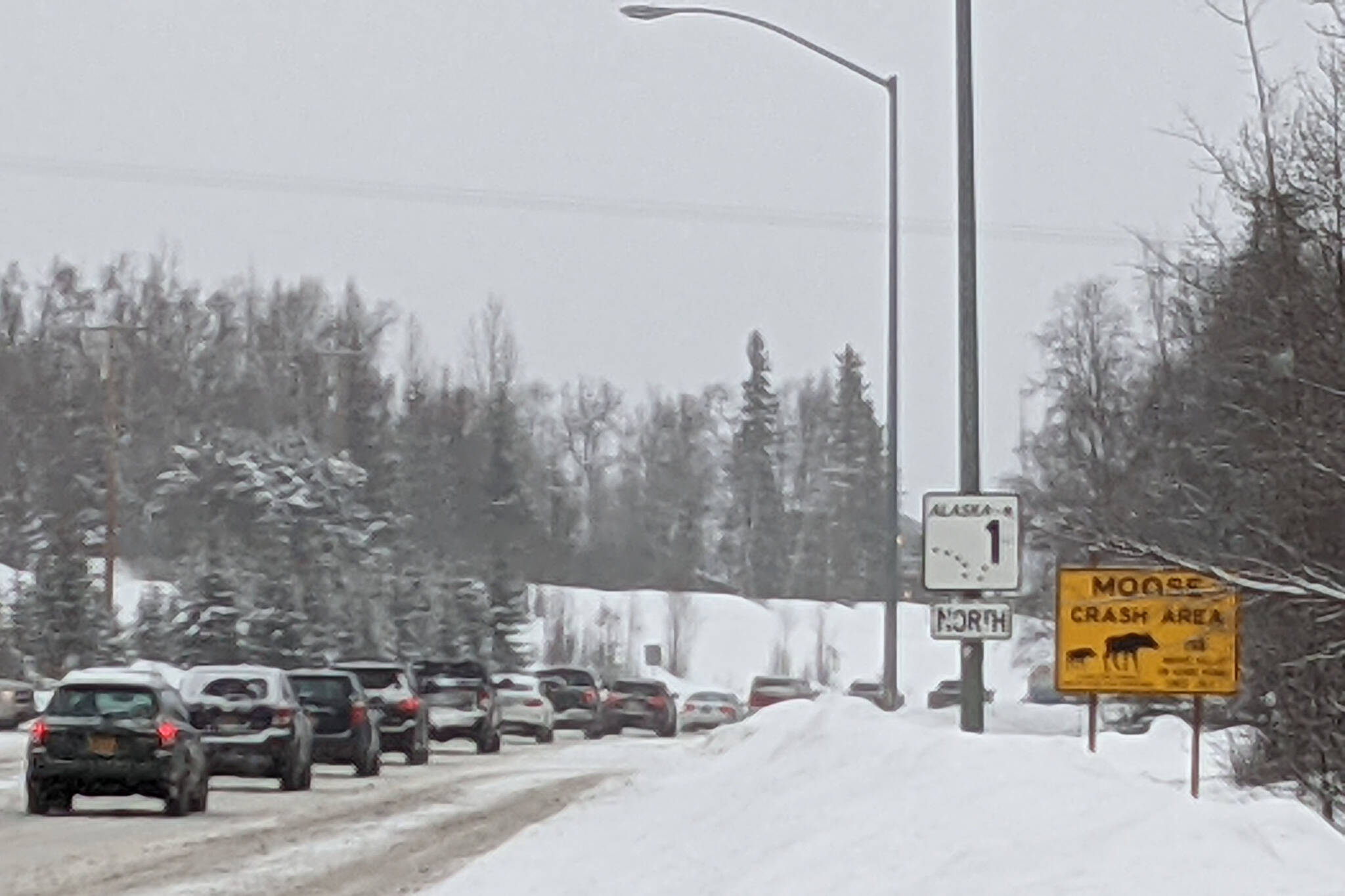Alaska’s financial woes are stalling progress on state efforts to improve safety along the Sterling Highway between Sterling and Soldotna. That’s according to documentation from the Alaska Department of Transportation and Public Facilities, which has pivoted to seeking federal — as opposed to state — funding for the project.
The project — aimed at improving safety along the Sterling Highway between mileposts 82.5 to 94, or between Sterling and Soldotna — is described in project documents as being “essentially the same” as one presented in 2014, which came out of a state-funded study. The road was first identified as a safety corridor in 2009. In promoting a need for more safety along the road, DOT cited a high rate of “fatal and major injury” crashes on the stretch.
As a result of “the state’s current economic climate,” however, DOT wrote that the department is developing the project so that it will be eligible for federal funding, which will require a separate environmental review process. Currently, DOT expects the state will contribute about 9% of project funding. Design, right-of-way acquisition, utility relocation and project construction is expected to cost about $76.4 million.
“Project funding is now anticipated to be primarily federal,” project documents say.
The project, when completed, would include a four-lane divided highway with a depressed median, a separated bike and pedestrian pathway north of the highway, turn lanes and intersection realignments, according to project documents. It is expected to be completed in 2026.
Those features are expected to improve safety, DOT documentation says, by providing more separation between traffic moving in opposite directions, which would reduce the risk of head-on collisions, and dedicated turn lanes, which would reduce the risk of rear-end collisions.
That’s in addition to the separation of bicycle and pedestrian spaces from the highway, which is expected to reduce injuries from collisions with vehicles, and the realignment of intersections, which would improve the ability of driver’s to see further.
“The Sterling Highway is a critical surface transportation link in the Kenai Peninsula Borough,” the project website says. “ … The purpose of the Sterling Safety Corridor Improvements project is to improve overall safety and improve efficiency during peak summer and commuter traffic times.”
More information about the project can be found at sterlinghighway82to94.com.
Reach reporter Ashlyn O’Hara at ashlyn.ohara@peninsulaclarion.com.

